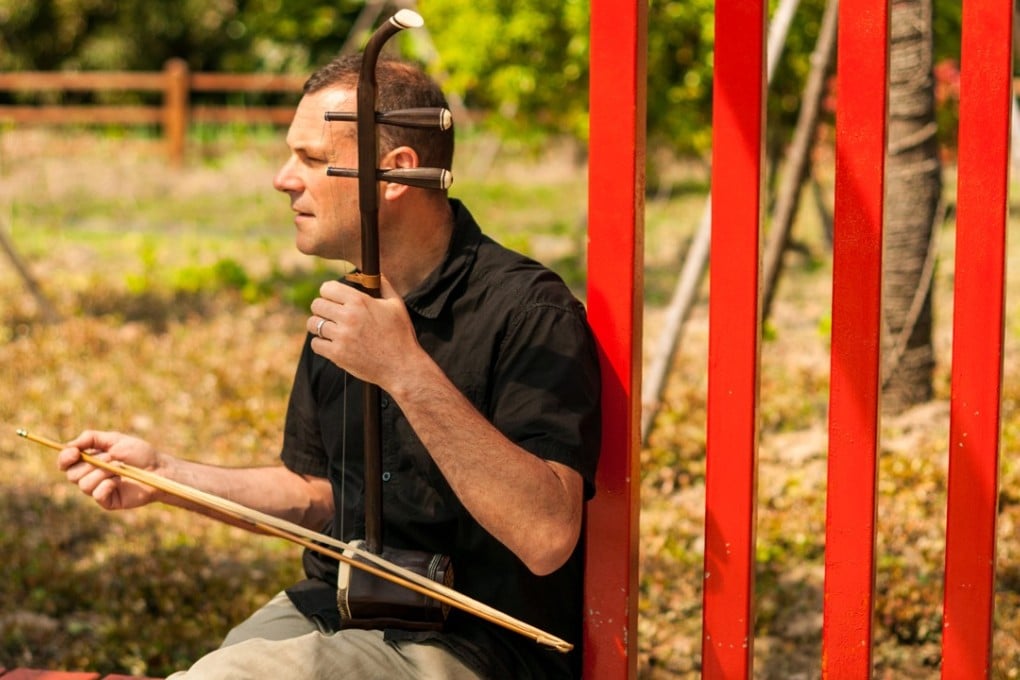Canadian erhu master on his love of China’s stringed instruments and how ditching the violin made him a better musician
Jeremy Moyer discovered the two-stringed erhu on a volunteering trip to Taiwan in 1990. He has just released his third solo album of Chinese stringed instruments and has developed a sound that is entirely unique

Performing recently in a Shanghai park, a musician gingerly glides his bow across the strings of his erhu before tightening them to bring the instrument back into tune. Soon he is immersed in the haunting sounds of his composition, Snow Legend, with little but the calling of birds in the park for accompaniment.
Across China, it is common to see elderly people in parks playing the two-stringed instrument often referred to in English as a “spike fiddle”. But what makes this performance in Shanghai remarkable is that the musician is a foreigner.
Wu Tong modernised Chinese instrument the sheng; now he’s turning clock back
In February, Jeremy Moyer released his third solo album, Chinese Bicycle Stories, featuring his own compositions for both the erhu and qinqin, a Chinese three-stringed version of the lute. It was the Canadian’s latest milestone in his journey into traditional Chinese instruments that started with a volunteering trip to Taiwan back in 1990.
Moyer grew up surrounded by music in a small town in Ontario. He played the violin and piano, but ditched both for the guitar in his teenage years – a move that proved instrumental.
“What was important about learning guitar by myself and wanting to play songs I liked was that I discovered you could learn by ear,” he says. The ability to figure out chords and be able to play by ear would later prove crucial in Taiwan.
Moyer first went to Taiwan in 1990 as a volunteer for a year with his Mennonite church and helped in a school for the blind and handicapped. “There were temples everywhere and musicians playing in them – both groups of retired amateurs and professional temple ensembles,” he recalls.
